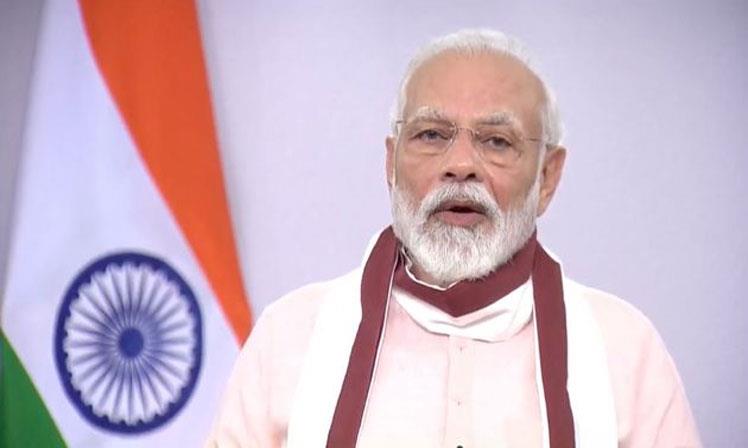
In his fifth address to the nation on Covid-19, Prime Minister Narendra Modi announced an economic package to "make India self-reliant" signaling that the government has shifted its coronavirus strategy from "survival" to "revival" mode. The details of the economic package will be unveiled in days to come.
PM Modi said if the latest package is added to the economic package announced recently by the government in the wake of Covid-19 crisis and the decisions taken by the RBI, "today's package totals to Rs 20 lakh crore."
He said, "This is 10 per cent of India's GDP."
Before we proceed, let's recall some numbers.
PM Modi made it clear that the Rs 20 lakh package includes liquidity infusion by the RBI in phases recently, and also Rs 1.7 lakh crore package announced by Finance Minister Nirmala Sitharaman on March 27.
The RBI's first major decision came even before coronavirus had become an Indian crisis. On February 6, the RBI announced measures to inject liquidity in the economy to the tune of Rs 2.8 lakh crore.
When coronavirus outbreak became an Indian phenomenon, the RBI announced on March 27 - the same day as Sitharaman announced the special package - to inject an additional liquidity of around Rs 3.75 lakh crore.
On April 17 and 27, the RBI infused Rs 1 lakh crore more liquidity through two separate announcements. The monetary value of all these announcements (Sitharaman plus RBI) comes at around Rs 9.75 lakh crore.
The rest, that is, Rs 10.25 lakh crore is likely to be the actual announcement made by PM Modi on Tuesday evening. Standalone, this is little over 5 per cent of India's GDP.
There could be more catch here. India presented an approximate Union Budget of Rs 30 lakh crore in February. It is not yet clear how much of Rs 10.25 lakh crore would be new money, which has essentially to come from borrowing and raising certain taxes. Borrowing threatens India's credit standing and hiking taxes on financially stressed nation is an unlikely option.
In the case of the special package announced by Sitharaman, the experts pointed out that only about Rs 70,000 crore was fresh money. The rest was already provisioned for in the Union Budget.
In this sense, India's Covid-19 package is substantially different from what other big economies have announced. For example, the US has announced a special Covid-19 package to the tune of Rs 225 lakh crore ($3 trillion) but it is independent of what its Federal Reserve announced. The US Fed is an autonomous body like the RBI in India.
However, PM Modi's announcement of special package gives out a strong signal towards policy reorientation. He said the new package will focus on reviving medium and small scale industries - a sector that employs about 11 crore people. Its growth is intricately linked with the health of big industries and demand for private consumption.
PM Modi talked about major reforms concerning land, labour, liquidity and laws. Some states have already begun changing their labour laws to give industries a boost.
The liquidity boost is expected to come from government policy change. For example, the RBI allowed the banks to have an additional liquidity cushion of around Rs 8 lakh crore hoping the banks will lend the extra money to businesses - old and news.
But under the given economic sentiments in the country, the banks are not sure if they would get back their money. Nobody wants to dole out money to a debtor who may not pay back. The banks have instead parked their extra liquid with the RBI itself.
This is a peculiar case where the RBI is giving more and more money to the banks asking them to lend to businesses but the banks are reluctant and keeping their money with the banking regulator itself.
Taking forward from PM Modi's announcements, the government may come up with policy to boost the confidence of banks in India's economy and its market. A credit guarantee scheme may be on the anvil.
Similarly, the government is likely to send more money in rural areas and smaller urban centres to create a greater demand pull. This is also expected to generate more employment across the sectors. More employment means more money with the people. More money in people's pockets generates greater demand, which powers the wheels of economy.
In this sense, Modi's Rs 20 lakh crore package may actually be repackaging, in parts, but can pull back India's economy from the double shock of slowdown and corona crisis and put it on the path of revival. All depends on how government plans to provision money equivalent to 10 per cent of its GDP.
Leave a comment: (Your email will not be published)